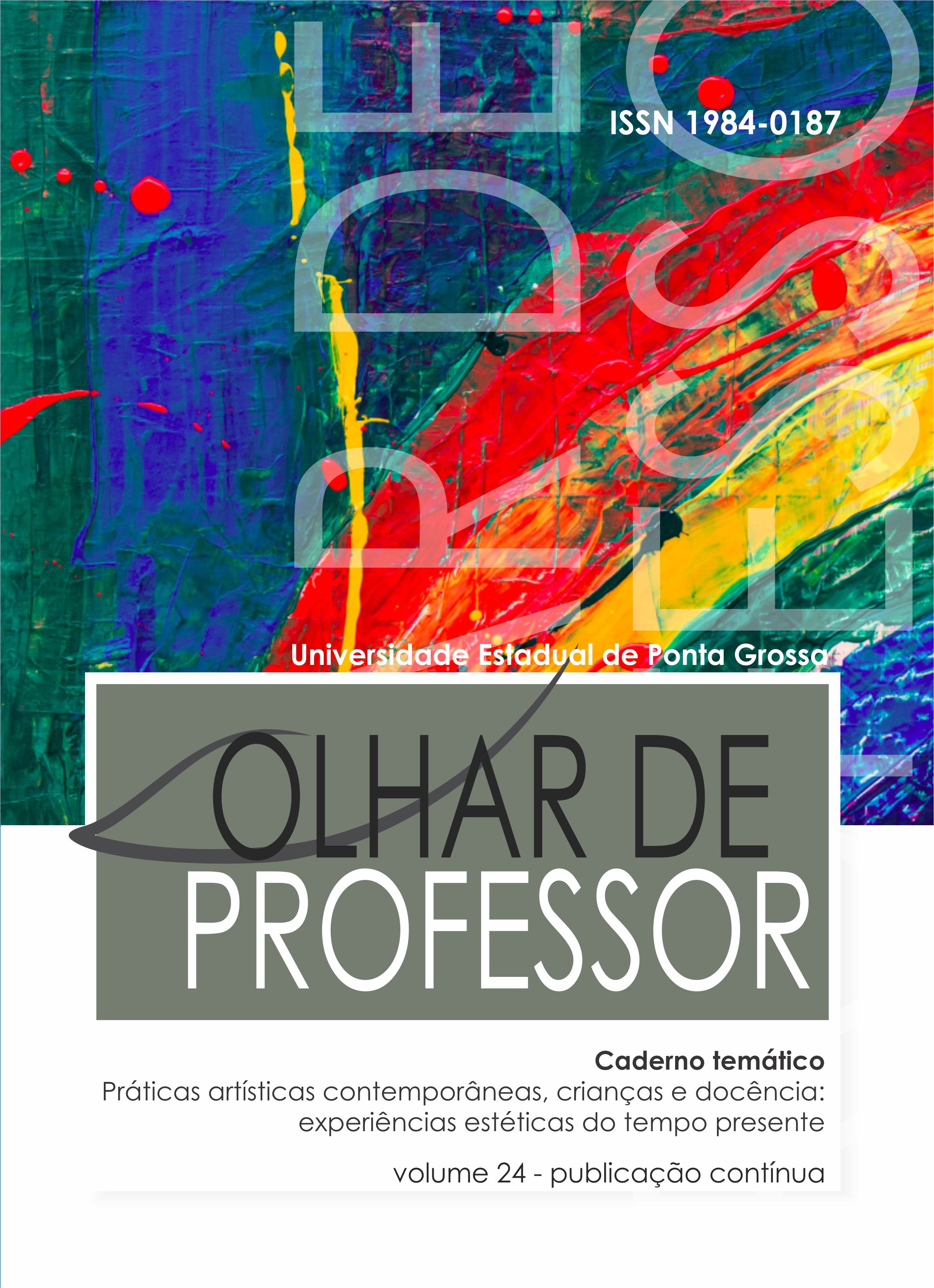Children's aesthetic experience and the relationship work of art in artistic spaces
Main Article Content
Abstract
The present text aims to present a reflection on aesthetic experience in early childhood education, through the act of mining and analyzing the pedagogical documentation, which in turn carries the minutiae and evidence of children's aesthetic experiences, which are the results of an educational project of Occupation of public and cultural artistic spaces by young children between 4 and 6 years old in the city of Piracicaba. The children participating in this project collaborated in the development of the master's research in which the present article is exposed. The discussion of the right to the city and occupation permeates the idea that aesthetic formation is part of the integral formation of young children. Walter Benjamin and Lev Vigotski were considered as theoretical contributions to support the conceptual construction of children's aesthetic experience.
Downloads
Article Details
Authors who publish in this journal agree with the following terms:
a) Authors keep the copyrights and concede the right of its first publication to the magazine. The work piece must be simultaneously licensed on the Creative Commons Attribution License which allows the paper sharing, and preserves both the author identity and the right of first publication to this magazine.
b) Authors are authorized to assume additional contracts separately, to not-exclusively distribution of the paper version published in this magazine (e.g.: publish in institutional repository or as a book chapter), with the author identity recognition and its first publication in this magazine.
c) Authors are permitted and stimulated to publish and distribute their papers online (e.g.: in institutional repository or on their personal webpage), considering it can generate productive alterations, as well as increase the impact and the quotations of the published paper.
d) This journal provides public access to all its content, as this allows a greater visibility and reach of published articles and reviews. For more information on this approach, visit the Public Knowledge Project, a project that developed this system to improve the academic and public quality of the research, distributing OJS as well as other software to support the publication system of public access to academic sources.
e) The names and e-mail addresses on this site will be used exclusively for the purposes of the journal and are not available for other purposes.

This work is licensed under a Creative Commons Attribution 4.0 International License.
References
___________ A obra de arte na época de sua reprodutibilidade técnica. Tradução e notas Francisco De Ambrosis Pinheiro Machado. Porto Alegre: Zourk, 2014.
BRASIL. Ministério da Educação. Diretrizes Curriculares Nacionais Gerais da Educação Básica. Ministério da Educação. Secretaria de Educação Básica. Secretaria de Educação Continuada, Alfabetização, Diversidade e Inclusão. Secretaria de Educação Profissional e Tecnológica. Conselho Nacional da Educação. Câmara Nacional de Educação Básica Diretoria de Currículos de Educação Integral. Brasília: MEC,SEB, DICEI, 2013.
CRUZ, M. Modos de Participação do adulto em processo de produção de significações: apontamentos para a investigação da formação de professores de educação infantil. Anais IX Congresso estadual paulista sobre formação de educadores. UNESP, p. 231-238, 2007.
_____. Literatura e educação estética na infância. 20° COLE Nas dobras do (im) possível. Mesa-redonda: Cultura, literatura e educação infantil. Campinas, 11 a 15 de julho, 2016 (no prelo).
GAGNEBIN, Jeanne Marie. De uma estética da visibilidade a uma estética da tatibilidade. In: Limiar e rememoração: Ensaios sobre Walter Benjamin. São Paulo: Editora 34, 2014. p. 155-175.
OLIVEIRA, Fernanda Ferreira. Produção de Sentido e Experiência Estética na Educação Infantil. Dissertação (Mestrado em Educação), 120 f. Universidade Metodista de Piracicaba. Piracicaba, 2017.
VIGOTSKI, Lev. (1930) Imaginação e Criação na infância: ensaio psicológico: livro para professores; apresentação e comentários Ana Luiza Smolka. Tradução Zoia Prestes. São Paulo: Ática, 2009.





